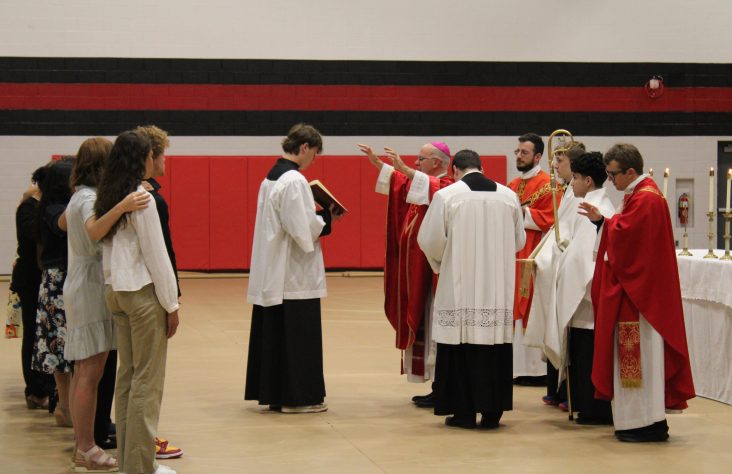November 4, 2009 // Uncategorized
St. Paul began his preaching ministry in Damascus
What are the sites pertaining to St. Paul in Damascus?
Damascus is a large city in Syria. It is called the oldest continually populated city in the world. Father John McKenzie says the river Barada, which rises in the snows of the Anti-Lebanon mountain range gives Damascus an abundant water supply before it exhausts itself in the marshes of the Syrian desert. Damascus is thus a very large oasis and a gateway to the desert.
Christianity appeared in Damascus only a few years after the death of Jesus. The Christians here were numerous enough for St. Paul, then called Saul, to obtain authorization from the high priest to arrest any Christians he might find there.
On the road to Damascus, a light from the sky flashed about Saul and he fell to the ground. He heard a voice saying “Saul, Saul, why do you persecute me? I am Jesus. Get up and go into Damascus.” Saul was blind, so men had to lead him into Damascus.
Meanwhile Jesus appeared to Ananias in Damascus and told him to go to Straight Street at the house of Judas and ask for Saul of Tarsus. So Ananias laid his hands on Saul and he regained his sight. Then Saul was baptized a Christian and began preaching in Damascus that Jesus was the Messiah.
The Jews were infuriated and wanted to kill Saul. So the disciples of Saul took him along the city wall at night and lowered him over the wall to the ground, using ropes and a hamper or basket. Saul then escaped to Jerusalem.
Straight Street, where St. Paul walked, is still there in Damascus. It is one of the oldest streets in the world. In St. Paul’s time, Damascus was laid out in the form of a rectangle intersected by straight streets.
R. Burns says, in Roman times, Straight Street was four times the width of the present roadway. All the Roman columns are gone. Commercial establishments and workshops now crowd the thoroughfare to allow only one lane of vehicles and barely room for pedestrians at the sides.
In Damascus is the Chapel of St. Ananias. This chapel reputedly includes part of the house of Ananias where Saul took shelter. R. Burns says there is archaeological evidence that the remains of the house could date back to the first century when Saul lived. A Byzantine church was originally built on this site.
At Damascus there is also St. Paul’s chapel said to mark the spot where Saul was lowered over the city walls in a basket. Set into the city walls is a 20th-century chapel built by the Greek Catholics. R. Burns says there is no historical evidence that this is the spot where Saul escaped, but it is as likely a site as any. The New American Bible says this is the traditional site.
Another Christian site in Damascus is the Cathedral of St. John the Apostle. Theodosius (379-395 A.D.) and Arcadius adapted the pagan Roman temple of Jupiter-Hadad to house this cathedral.
There is also a modern Greek Orthodox Church in Damascus dedicated to the Blessed Virgin Mary. It contains a fine marbled iconostasis of the 18th century. An early Byzantine church was located on this site.
The best news. Delivered to your inbox.
Subscribe to our mailing list today.





